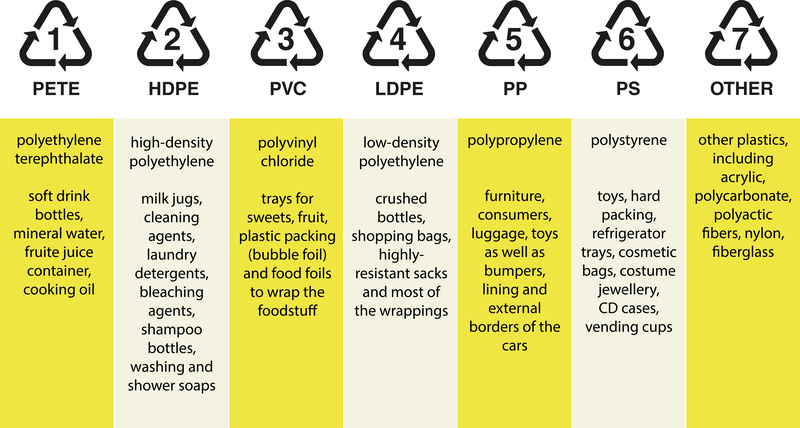Builders Skip: Exploring Its Function and Purpose
A builders skip stands as an essential tool on most construction sites, offering an efficient, practical, and cost-effective solution to waste management challenges. Whether you are tackling a minor home renovation or a large commercial build, understanding the function and purpose of builders skips can save you time, comply with legal requirements, and boost overall site productivity.
What Is a Builders Skip?
A builders skip is a large, open-topped waste container designed to hold and transport significant amounts of construction and demolition waste. Skips are made from robust steel, specifically engineered to withstand the rigors of heavy waste. Typically, a builders skip ranges from 6 to 8 cubic yards in size (although other sizes exist), making it the go-to choice for medium to large projects.
- Standard size: 6-8 cubic yards
- Material: Tough, high-grade steel
- Application: Commonly used on construction, renovation, and landscaping projects

The Core Function of a Builders Skip
The main function of a builders skip is to serve as a centralised collection point for a variety of construction waste. Instead of piling up debris in hazardous heaps, workers can dispose of rubble, bricks, wood, plasterboard, and other waste quickly and safely. Once the skip reaches capacity, the waste management service provider removes and replaces it, ensuring the site remains tidy, organised, and compliant with regulations.
Key Functions of a Builders Skip:
- Efficient Waste Collection: Avoid scattered debris by centralising all waste in one secure location.
- Safety: Eliminates tripping hazards caused by loose materials on site.
- Environmental Compliance: Helps meet legal obligations for proper waste segregation and recycling.
- Convenience: Reduces the time and energy spent moving waste to distant dumps or disposal points.
- Cost-Saving: One skip hire can replace dozens of small trips to a landfill, substantially cutting logistics expenses.
Purpose: Why Use a Builders Skip?
The purpose of hiring a builders skip extends beyond tidiness--it plays a pivotal role in enhancing sustainability, increasing work speed, and ensuring safety. Let's take a more detailed look at the main reasons for using a builders skip on any construction or renovation project:
1. Managing Large Quantities of Waste
Construction projects typically generate bulk waste: broken bricks, soil, timber, metal, and packaging. Transporting this waste piecemeal is inefficient and costly. With a builders skip, large volumes of waste can be disposed of instantly, streamlining workflow and keeping the project on schedule.
2. Promoting a Safe Work Environment
A cluttered construction site poses a significant risk to workers. Exposed rubble, timber, and discarded packaging can cause injuries. By providing a designated space for all types of waste, a skip bin for builders helps maintain a clear, walkable site and reduces workplace accidents.
3. Supporting Environmental Responsibility
Legislation increasingly demands proper disposal and recycling of construction waste. Builders skips support recycling by separating reusable materials and routing them to appropriate facilities. Moreover, reputable skip suppliers ensure waste is processed responsibly, helping you reduce landfill impact and demonstrate sound environmental practice.
4. Complying with Local Regulations
Many councils mandate the use of builders skips for larger projects and enforce strict rules on waste disposal. Failing to use a skip, or disposing of waste improperly, can attract hefty fines or halt your project altogether. Hiring a builders skip ensures you meet all local legislation, avoid penalties, and demonstrate professional standards.
Different Types of Skips for Builders
Not all projects are the same, so a variety of builders skip sizes and styles are available to suit diverse needs. Choosing the right skip type and capacity can boost cost efficiency and ensure your specific waste requirements are met.
Main Types of Builders Skips:
- Mini Skips: (2-3 cubic yards) -- Ideal for small renovations, garden clearance or minor DIY projects.
- Midi Skips: (4-5 cubic yards) -- Practical for bathroom refits, kitchen overhauls, or medium-sized repairs.
- Standard Builders Skip: (6-8 cubic yards) -- The most popular option, suited for most medium-to-large construction jobs.
- Large Skips: (10-16 cubic yards) -- Suitable for extensive commercial schemes with high waste volumes.
- Roll-on/Roll-off Skips (RoRo): (20-40 cubic yards) -- Used in huge demolition or industrial construction sites.
What Can You Put Into a Builders Skip?
A common question when renting a builders skip is "What type of waste can go into a skip?" Understanding skip rules is crucial to avoid extra fees and ensure your site remains legally compliant.
Permitted Waste Types for Builders Skips:
- Bricks, concrete, rubble, tiles
- Wood, timber offcuts
- Plasterboard (check local rules)
- Soil, sand, stone, gravel
- Metals (pipes, beams, fixtures)
- Plastic and glass (in moderation)
- Packaging, cardboard
Prohibited items include: asbestos, batteries, electrical appliances, paint, solvents, oils, tyres, and hazardous waste. Always consult your skip hire provider for their detailed restrictions before disposal, as fines may apply for unauthorised items.
How to Choose the Right Builders Skip for Your Project
Selecting the ideal builders skip size and type is crucial. Choosing too small a skip can lead to costly multiple hires; too large, and you may waste budget and space.
Consider the Following Factors:
- Project scale: Estimate the total waste your job will produce.
- Site access: Ensure the skip will fit in your driveway, road, or site entrance.
- Waste types: Consider material proportions - heavy materials vs. bulky, light waste.
- Duration: Select hire periods based on your construction timeline.
- Budget: Assess rates for different builders skip sizes and factor in permit costs if skips go on public property.
Tip: If in doubt, always opt for one size larger than your estimate to avoid overfilling or needing a second skip.
How Is a Builders Skip Delivered and Collected?
Most skip hire services provide flexible delivery and collection options to suit your project schedule. Here is how the process works:
- Ordering: Reserve your builders skip online or by phone, providing details such as size, placement, and preferred dates.
- Delivery: The skip is delivered via truck and placed at your specified location (driveway, site, or roadside - permits may be needed).
- Usage: Fill the skip within weight and volume limits. Avoid overloading, as skips should be level loaded for safe transport.
- Collection: On the agreed date, your provider collects the filled skip and responsibly disposes of or recycles the waste.
Note: Always check access for skip lorries, and ensure no parked cars or obstacles block the drop-off/collection point on the scheduled days.
Legal and Environmental Considerations
When using a builders skip, certain legal and environmental obligations apply, especially regarding waste segregation and public safety.
Permit Requirements
- Private property: No skip permit needed if the skip is fully on your property.
- Public highway: Permit required from your local authority. Your skip hire company can usually arrange this, but check permit processing times.
Waste Transfer and Recycling
Licensed carriers transport all waste to authorised facilities, where it is sorted and, where possible, recycled. This complies with the UK Waste (England and Wales) Regulations 2011 (or regional equivalent), ensuring responsible waste management.
Safety and Loading Regulations
- Load skips no higher than the rim to avoid safety hazards.
- Distribute weight evenly to allow safe lifting and transport.
- Cover or secure the skip if leaving overnight in public areas.
Benefits of Using a Builders Skip
There are many advantages to using a builders skip on your next construction or demolition project:
- Convenience: One solution for all site waste types.
- Increased productivity: Less time spent on waste management, more time building.
- Cost-effectiveness: Fewer trips to landfill reduce fuel, labour, and vehicle costs.
- Regulatory compliance: Satisfies council and government waste rules.
- Recycling benefits: Supports your company's environmental commitments and reduces landfill.
- Professional image: A tidy, organised site reflects your company's standards and reliability.

When Not to Use a Builders Skip
While builders skips are versatile, they are not suitable for every type of waste. For hazardous materials, clinical waste, or extremely heavy dense waste, alternative disposal methods are required. Also, skips placed in tight or busy urban locations may need extra precautions or permits, or may not be feasible at all.
Conclusion: Is a Builders Skip Right for Your Project?
If your construction, landscaping, or renovation project generates moderate-to-large amounts of waste, a builders skip is almost always the most effective and economical disposal method. It ensures quick and safe removal of debris, supports legal compliance, and demonstrates environmental responsibility.
By understanding the function and purpose of builders skips--as well as how to select, use, and manage one--you gain a significant advantage, keeping your project on track while taking care of the planet.
For reliable, efficient waste management, consult a trusted builders skip hire expert in your area and let professionals help you handle the mess, so you can focus on building.
```